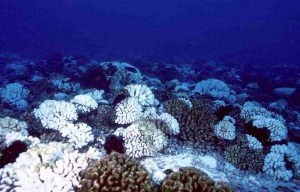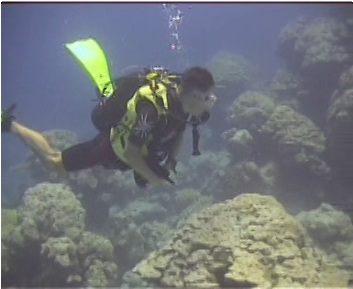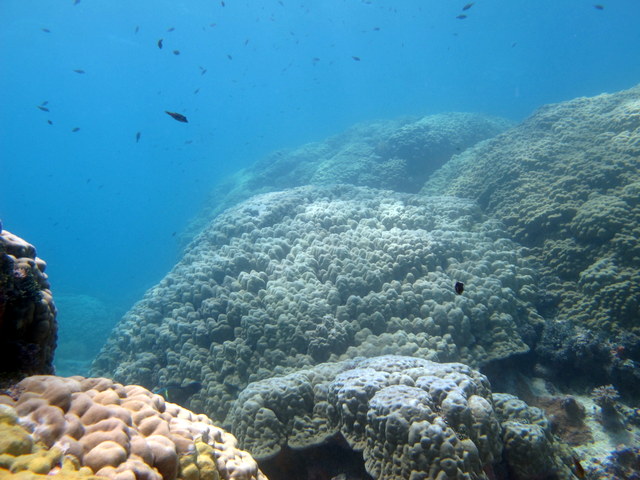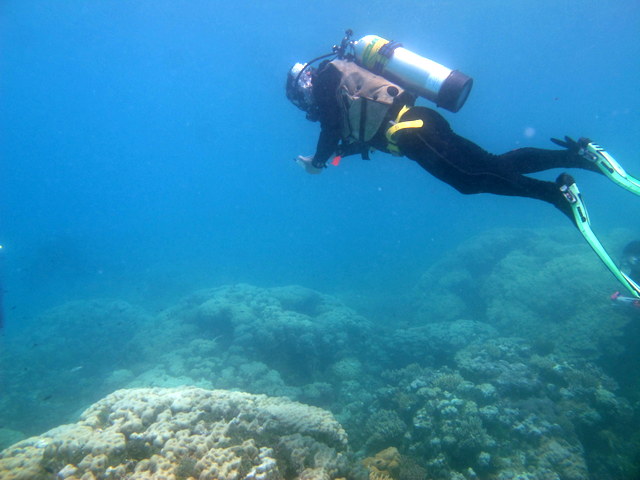In 1998, we visited Rangiroa Atoll shortly after sea temperatures rose 6 degrees greater than summer norms and caused massive coral bleaching. Virtually all of the branching coral Pocillopora died and a quarter of the mound-shaped coral, Porites, lost almost all their ‘skin’. Many of these mound-shaped corals were several hundred years old but were reduced to fragments of their former selves in a matter of months. It’s a little like an oak forest being reduced to mere oak saplings.


Rangiroa Reef Recovery
Revisiting these reefs fifteen years later, we found incredible recovery. The branching corals have rebounded in profusion but surprisingly, the Porites have also recovered. This is new to science – we had no idea that these long-lived corals could recover so dramatically. It seems that the little fragments of living coral managed to regrow over the dead skeleton. One way to visualize this is to imagine that you peeled back an orange to leave just a tiny piece of peel. That represents what the coral bleaching did to the coral surface. Now imagine that the remaining fragment of orange peel grew back leaving you with the original orange.

Finding that some corals have great regenerative capability gives us hope that corals are more vigilant towards climate change impacts than we thought.

(Photos by 1 – Prof. Jean Jaubert; 3-4 Brian Beck)
To follow along and see more photos, please visit us on Facebook!